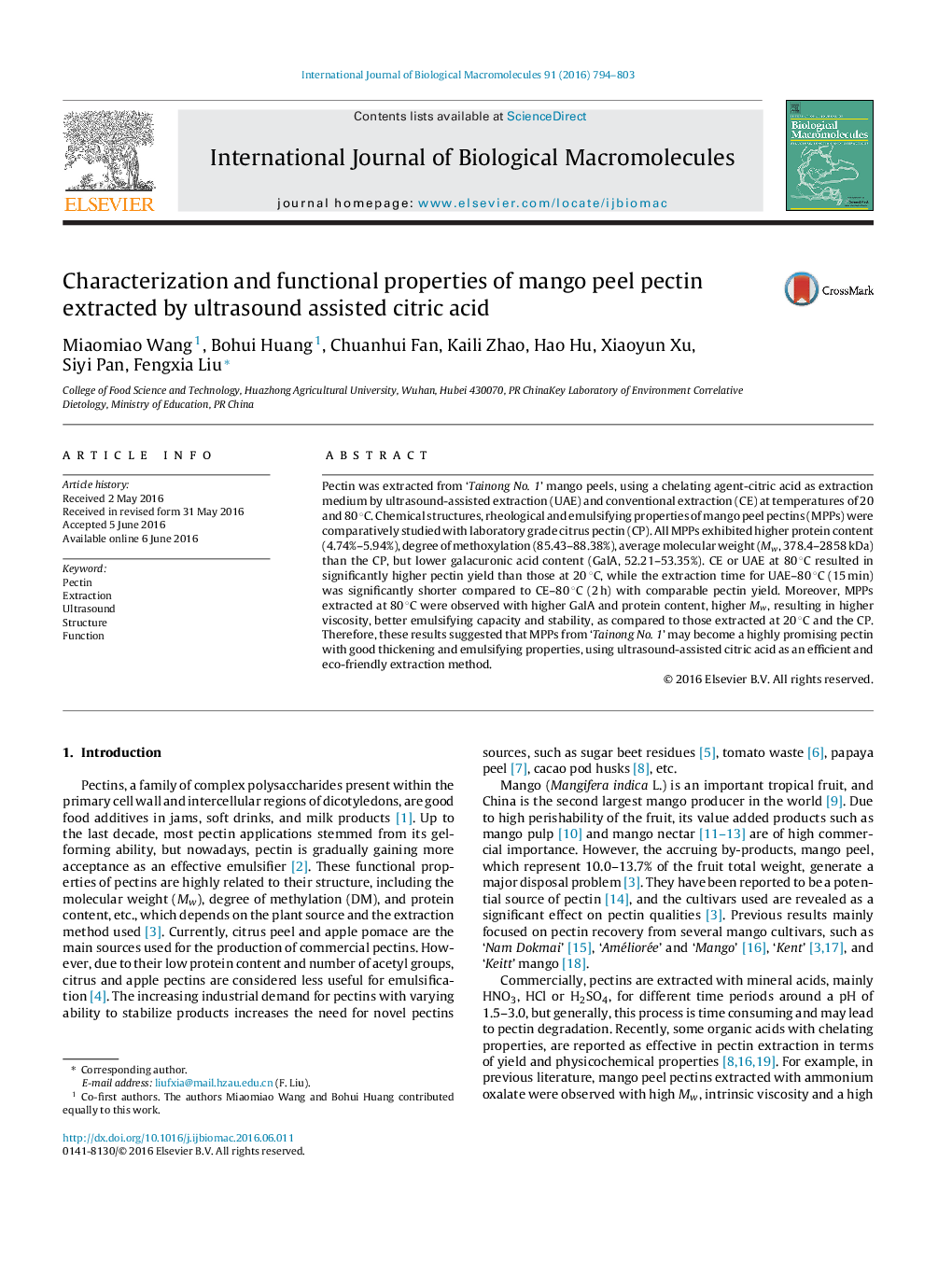| Article ID | Journal | Published Year | Pages | File Type |
|---|---|---|---|---|
| 1985688 | International Journal of Biological Macromolecules | 2016 | 10 Pages |
Pectin was extracted from ‘Tainong No. 1’ mango peels, using a chelating agent-citric acid as extraction medium by ultrasound-assisted extraction (UAE) and conventional extraction (CE) at temperatures of 20 and 80 °C. Chemical structures, rheological and emulsifying properties of mango peel pectins (MPPs) were comparatively studied with laboratory grade citrus pectin (CP). All MPPs exhibited higher protein content (4.74%–5.94%), degree of methoxylation (85.43–88.38%), average molecular weight (Mw, 378.4–2858 kDa) than the CP, but lower galacuronic acid content (GalA, 52.21–53.35%). CE or UAE at 80 °C resulted in significantly higher pectin yield than those at 20 °C, while the extraction time for UAE–80 °C (15 min) was significantly shorter compared to CE–80 °C (2 h) with comparable pectin yield. Moreover, MPPs extracted at 80 °C were observed with higher GalA and protein content, higher Mw, resulting in higher viscosity, better emulsifying capacity and stability, as compared to those extracted at 20 °C and the CP. Therefore, these results suggested that MPPs from ‘Tainong No. 1’ may become a highly promising pectin with good thickening and emulsifying properties, using ultrasound-assisted citric acid as an efficient and eco-friendly extraction method.
